Gemstone
If you cast a glance at an exotic gemstone wall, you will suddenly remember the Alibaba fairy tale about the great treasures hidden behind the Sesame Doors, and those heavy trunks loaded with precious stones. Indeed, exotic stone slabs look like huge slices of multi-coloured gemstone cakes. Some of those slices are cut as one-piece from giant gemstone blocks. Others are made up of smaller gemstones of the same kind fitted side by side and glued together with a special glaze. When such a block is cut, the facets sliced in halves open up to show their magic inside layers. Such slabs often remind of frozen kaleidoscopic pictures.
Gemstone slabs can be opaque, transparent or partly transparent, depending on individual precious and semi-precious stones comprising them. When backlit by natural or artificial light sources, gemstone walls, columns, partitions and counters reveal their spellbinding beauty. Just imagine fine-polished slabs of blue agate, purple amethyst, pink quartzite that are more than 3 m long and 1,5 m wide. Opaque red jasper, green amazonite, golden tiger's eye slabs look nonetheless dramatic. Exotic fossilized rock or fossilized wood also belong in this class. Whatever the origin, each gemstone slab is a natural masterpiece of its own.
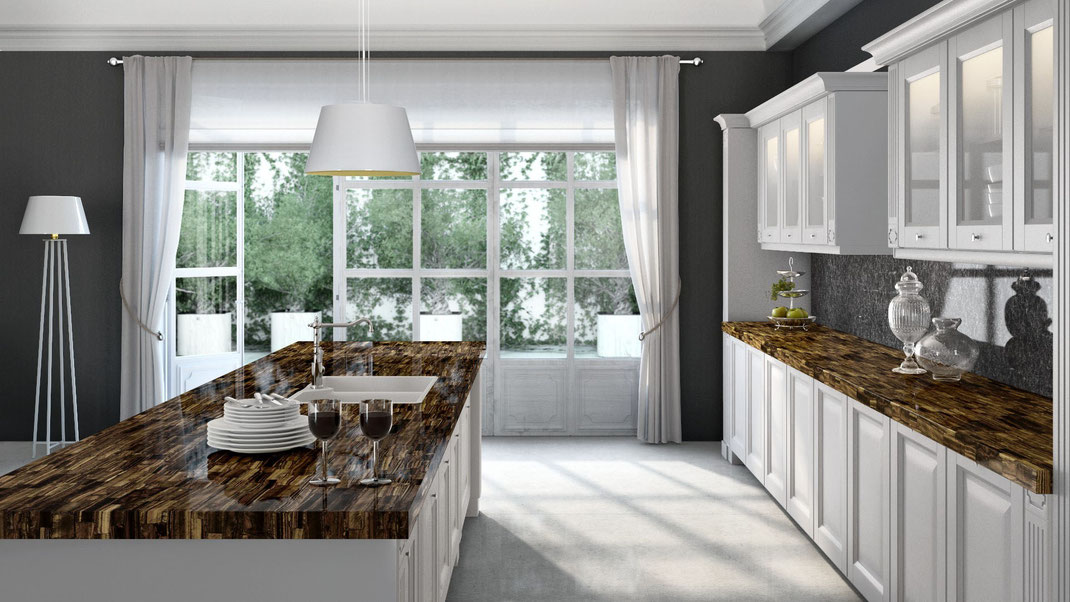
Gemstone fabricators in lithuania
What makes gemstone unique?
Apart from their fairytale beauty, one of the most attractive aesthetic properties of gemstone slabs is their ability to transmit light. Translucent gemstone walls mysteriously glow when backlit by natural light. Where little or no natural light is available, artificial light sources are often installed to enhance this inherent feature. When combined with hidden strips of LED lights, gemstone countertops and bar counters light up like party decorations. Exotic slabs are approximately 3-4 cm thick, and most of them reach 3 m X 1,5 m in size. The transparency of a particular slab depends on its thickness and composition.
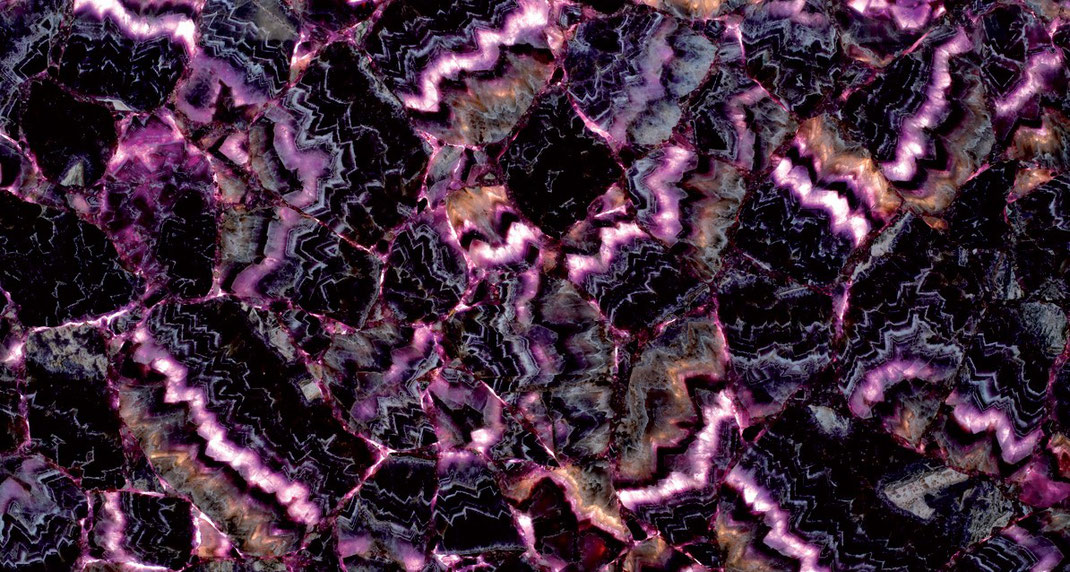
Gemstone transparency and luxurious patterns are the main reasons why designers choose them for some of their high demanding projects. Precious slabs can be creatively used to make decorative walls and partitions, they are desirable for fabricating glamorous furniture of unique design. Gemstone looks great in luxury nightclubs and restaurants. You may see gemstone counters, bars, walls and washbasins in casinos. When used moderately, precious stone details look great in many interiors. They can be combined with wood, concrete, steel or glass to give modern spaces an unusual touch. A narrow strip of translucent gemstone installed in a minimalistic bathroom wall as a natural source of light will look amazing.
Sensitive and fragile, gemstone slabs do not like changes in temperatures and can therefore only be used indoors. They tend to be much more susceptible to environmental factors than marble or granite. They scratch quickly and need to be handled more carefully than other types of natural stone. Precious slab properties largely depend on particular gemstones composing them. Usually gemstone slabs are very expensive, and not every stone fabricator will want to work with them. Those who will are likely to charge more for fabricating items from gemstone than from granite or marble.
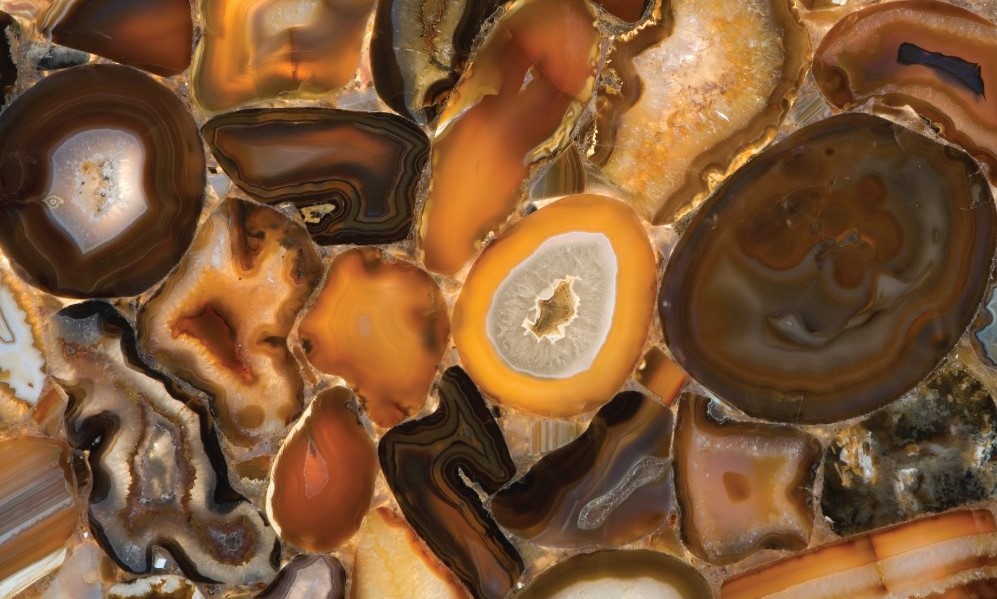
Gemstone types and colors
Accidental minerals and impurities in gemstones give them different shades. Often the varieties of gemstones that have almost identical composition have different names. For example, clear quartz is called rock crystal, violet quartz is called amethyst, yellow quartz is called citrine, smoky quartz is called marion, and green quartz is called prazem. Agates can be white, yellow, brown, red or black. Tiger's eyes, cat's eyes and falcon's eyes are also minerals of the quartz group. Sometimes one color in stones shifts imperceptibly into another, and the two ends of the slab look like two different stones.
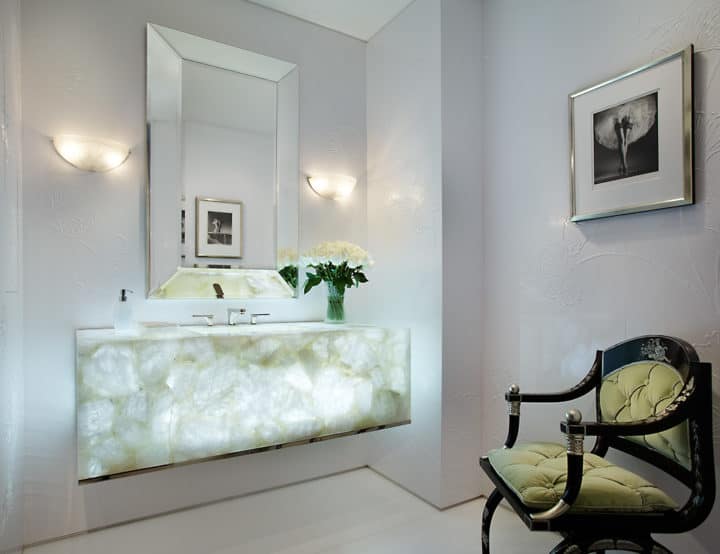
The scientist Alexander Fersman (1883–1945) categorised precious and semi-precious stones into groups based on colour:
- Clear and white (transparent and opaque) - diamond, crystal, chalcedony, agate
- Blue - aquamarine, topaz, sapphire, turquoise, chrysocolla, fluorite, lazurite
- Purple and pink - amethyst, rhodonite
- Red - ruby, spinel, hyacinth, rubellite, garnet, carnelian
- Green - emerald, chrysoberyl (alexandrite), malachite, jade, amazonite
- Yellow - zircon, phenakite, avantiurine
- Speckled - tourmaline, jasper, feldspars
- Black - obsidian, black tourmaline, smoky quartz
- Colour-changing - precious opal, moonstone, sunstone, cat's eye, falcon's eye, tiger's eye
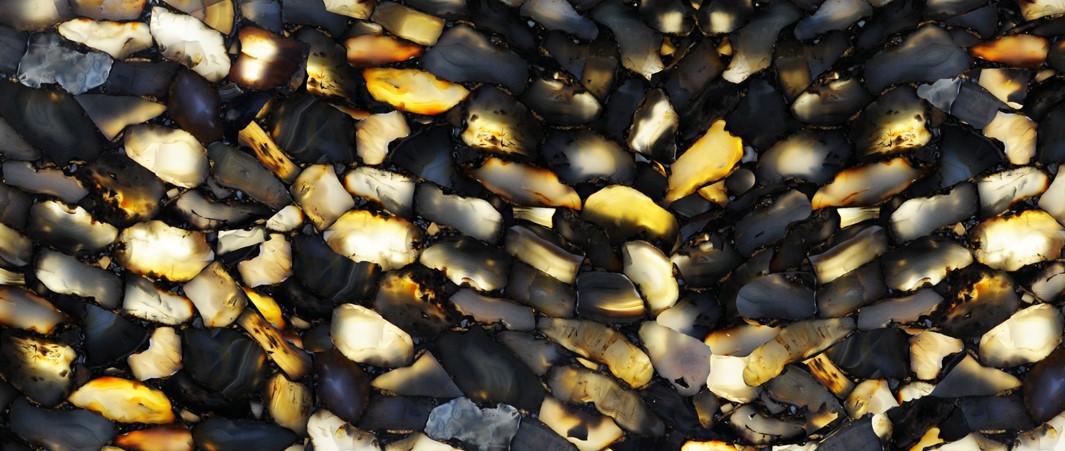
Where gemstones are found
Many precious and semi precious stones are found in Sri Lanka, which is known as the treasure trove of the Indian Ocean. The island is rich in garnets, zircons, tourmalines, beryl, topaz and quartz. The country's mining industry is concentrated in Ratanpura, known as the city of gems. Sun and moon stones as well as aquamarines come from India. Afghanistan is famous for lazurites, Australia is known for opals, Myanmar is proud for its jade. Tanzania and Kenya are rich in tanzanite. Many gemstone slabs come to Europe from the Middle East, North Africa and China.
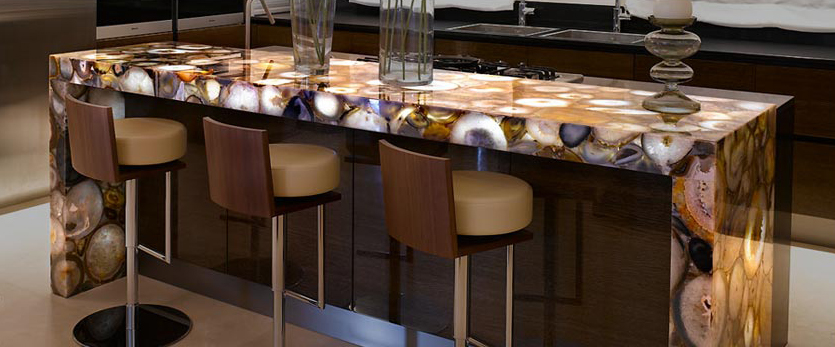
gemstone propertoes
- Luxurious
- Noble colour palette
- Fragile
- Not resistant to heat and fire
- Not resistant to environmental factors (acids, etching)
- Not scratch resistant
- Not resistant to temperature changes
- Suitable for interior decoration
- Hardness by Mohs Scale - 3-4
- Need sealing every 6-12 months
- Expensive

Ehat are Gemstone slabs used for?
Decorative walls and partition walls
Living room countertops and furniture surfaces
Kitchen worktops
Bathroom vanities
Window sills
Interior accents
Fireplace decoration
Stairs
Flooring
Walls
SPA elements
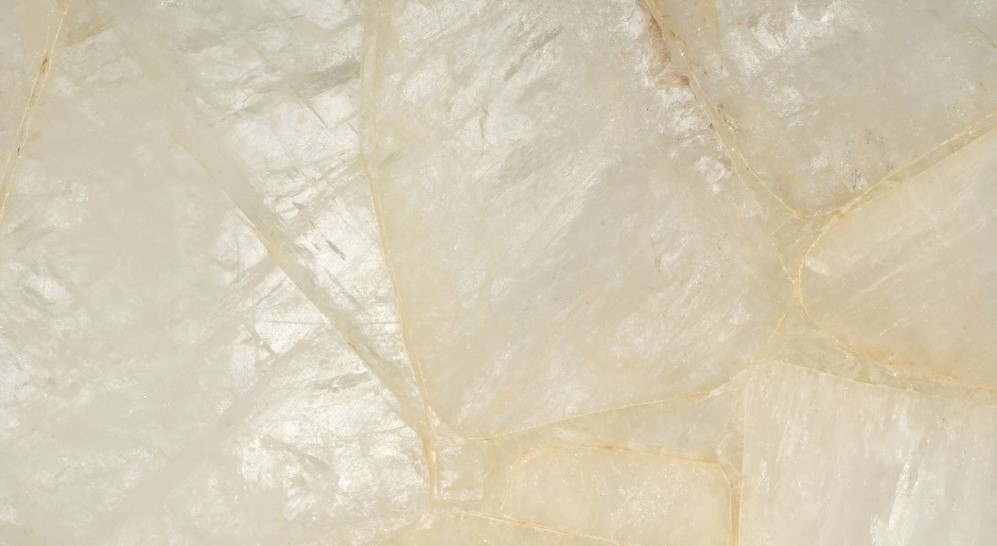
How to clean gemstone surfaces
Gemstone surfaces scratch and chip easily, therefore countertops fabricated from gemstone are only suitable for those kitchen areas that are little used. All kinds of gemstone should be cleaned very gently and with great care. No acidic cleaners should be applied, only mild soap or pH-neutral soap can be used. The best cleaning option is a special gemstone cleaner.
Countertops from gemstone have little tolerance for liquids. Moisture left on them can result in stains. Stained gemstone worktops can only be cleaned with a soft brush, as any abrasive devices will scratch them. It is necessary to wipe the surface dry with a clean cloth.
Gemstone furniture tops, cladding and walls should be sealed at least twice a year with special stone sealants. Apply a small amount of the sealer to a dry cloth, rub it into the stone and let it sit for a few minutes. Then rub the stone with a new dry cloth for a few minutes. If possible, let the surface dry for 6 hours to allow the sealer to soak in. Stone sealers help to protect gemstone surfaces from stains and acid etching.


























